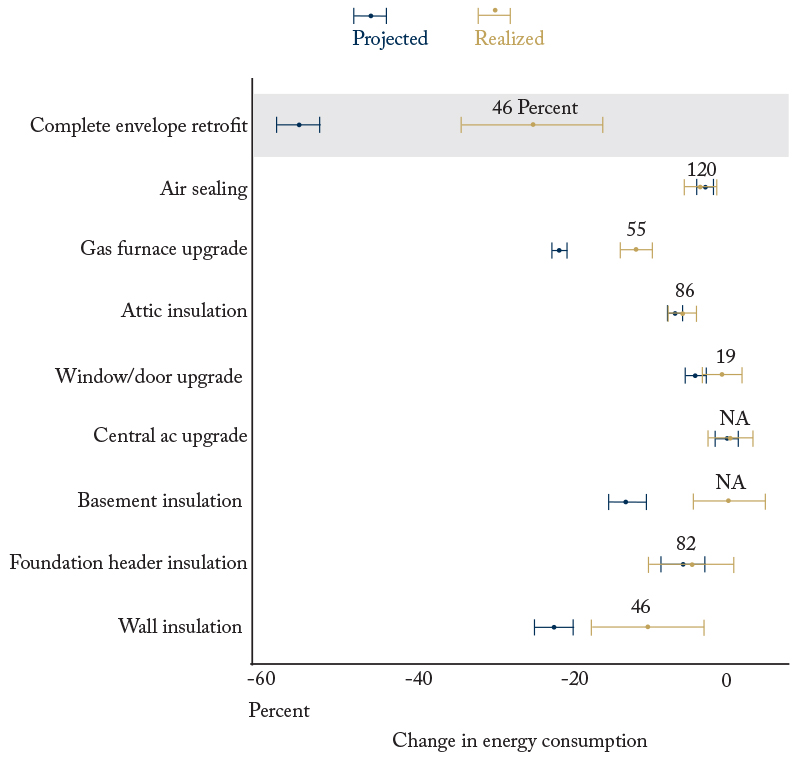From: Erica Myers and Maya Papineau
To: Green Transition Watchers
Date: January 18, 2023
Re: Current Energy Modelling for Buildings is a Roadblock to Net Zero
Decarbonization of industry and transportation are often top of mind when considering Canada’s ambitious 2050 net zero emission goals.
This often obscures a crucial sector that will determine whether our country can meet its greenhouse gas (GHG) reduction commitments. Buildings contribute more to annual emissions than personal vehicle use and given their long lifespan about two-thirds of the buildings standing today will still be in use in 2050.
Achieving net zero in this sector means commercial and residential spaces need to be electrified, accompanied by a drastic reduction in the carbon emitted from electricity production.
These transitions will take decades to be fully realized. Investments in energy efficiency will be an important tool in the transition since they help reduce future energy demand that will need to be supplied by renewable sources while contemporaneously decreasing carbon emissions.
If done cost-effectively, energy efficiency investments have the potential to be one of Canada’s lowest cost sources of carbon abatement. When the energy bill savings alone outweigh the upfront cost, households can reduce their carbon emissions at zero or even negative cost.
But how can governments and consumers identify cost-effective retrofits?
Studies in Illinois, Michigan, Wisconsin and Mexico have shown that savings from energy efficiency programs routinely fall short of predictions, which can significantly reduce energy savings for households.
Canada is not immune to this issue. A recent study from one of us shows a significant wedge between projected and realized savings for a major Canadian retrofit program, EcoEnergy. Figure 1 shows the discrepancies between model predictions versus realized savings using utility data across eight of the most common retrofits. On average observed savings are only about 60 percent of projections.
What drives these shortfalls? It turns out the models used by the vast majority of major retrofit programs to predict savings are often biased, which, as one of us shows in another recent study, accounts for a large proportion of the discrepancy. Policymakers should be concerned about this because climate goal progress will be hindered if savings from an investment are not as high as expected for households and businesses. And if predictions do not align with actual outcomes, governments and households will not select the right kinds of retrofits, leading to an inefficient allocation of resources, lower returns for households, and potentially ineffective programs.
There is good news though. Government can improve program cost-effectiveness by using more accurate modeling techniques and data sources. This can guide better allocation of retrofit rebate dollars.
Currently, most energy efficiency programs, including in Canada, use engineering models to predict savings and suggest which retrofits households should pursue. The models are based on equations describing physical relationships between energy consumption, weather, and home characteristics.
But they do not incorporate any utility consumption data, which makes the modeling exercise difficult, because there is no way to calibrate predictions with real-world outcomes at the customer level. Advances in data infrastructure have made access to household-level billing data easier, which opens the possibility of far better accuracy in predicted savings from energy efficiency retrofits.
A recent study by one of us aims to test whether it is possible to develop better modeling techniques that substantially improve the returns from retrofit programs through improved allocation of funds.
The analysis uses household-level data from the Illinois Home Weatherization Assistance Program, part of the U.S.’s largest energy efficiency program. A data-driven approach using machine learning combined with demographics, weather, and housing structure variables predicts the impact of weatherization on home energy consumption. This approach is more accurate than the status quo engineering model approach. Importantly, the more accurate predictions can be used to target high-return interventions and dramatically increase the net social benefits of the program from $0.93 to $1.23 per dollar invested, a 30-percent improvement.
Canadian energy efficiency retrofit programs, like those in many other countries, do not deliver on promised savings. This does not mean we should give up on energy efficiency, but rather reconsider the approach.
Improved prediction methods using anonymized utility data have the potential to direct the use of rebate dollars and encourage consumer uptake of high-return retrofits more effectively. Done properly, energy efficiency can be a “win-win” for Canadian households and the climate and serve as a valuable tool for Canada’s path to achieving net zero emissions.
Erica Myers is Associate Professor, Department of Economics at University of Calgary and Canada Research Chair in Environmental, Energy and Resource Economics. Maya Papineau is Associate Professor, Department of Economics at Carleton University.
To send a comment or leave feedback, click here.
The views expressed here are those of the authors. The C.D. Howe Institute does not take corporate positions on policy matters.






